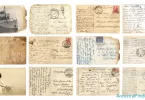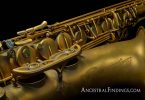There are clues to your family history in old photographs. Discovering previously unknown family photos from generations ago is like uncovering genealogical gold. If you spend enough time online interacting with distant cousins you discover on genealogy websites, you will undoubtedly eventually find someone who has amazing photos they are willing to share with you. You may also have some old genealogical photos yourself. Maybe you know who they are. Maybe you don't (not labeling photos was a big problem in generations past, as people just assumed everyone who saw the photo would know who it was and didn't think of future generations needing this information). Either way, your old family photos can tell you far more about your ancestors than just what they looked like. They can tell a very interesting genealogical tale of that person's life, times, and family. All you have to do to unlock these stories is to know how to identify and interpret the photos. Here's what you need to know to be able to do it.
Dating the Photograph
This is the most important step in identifying and interpreting old family photographs. If you don't know the time period in which the photo was taken, you won't have much luck determining who is in the photo, or anything personal about them. Some things that can help you in identifying the time period in which a photo was taken include:
- The style of clothing worn
- The hairstyles
- Background details in the photograph
- The type of photography used
Clothing and hairstyles are big clues as to time period, since fashions changed over time, just as they do today. Reading books on clothing and hair styles of the 19th and 20th centuries will help you identify the time period of a photo based on these things. There are also websites devoted to this subject. You can become familiar with the various styles for both men and women very quickly with just a little research on your part.
The same thing goes for the background details of the photo. If you can identify the time period a piece of furniture in the background came from, the era of house you're looking at behind the people in the photo, or even the way the landscape looked and how it has changed over time (including buildings that are in the photo that may no longer be there… find out when those buildings were actually there), you can identify when the photo was taken within a very accurate and narrow range of years.
Finally, the type of photography used is a great clue. Photography styles changed over the years as the technology advanced. Learn what the different types of photos look like and when they were used. You will have a much easier time identifying the time frame for a photo this way. You should make it a point to know the difference between a:
Knowing what type of photograph you're looking at can put you within just a few years or a decade at most of when the photo was taken, especially when you also identify the era of the clothing, hair, and background details of the photo.
Identifying Who is in the Photo
Sometimes, this can be done with great precision. Other times, it is guesswork. However, with the right knowledge, you can turn guesswork into pretty accurate guessing, where you can be reasonably sure of who you are looking at in the photo.
Location: If you can identify the location where a photo was taken (or the approximate location), you can often identify or make a reasonable guess as to the family or person in the photo. If you know your family or a particular ancestor lived in a certain place at a certain time and was a certain age when they lived there, knowing the location of the photo can give you a reasonable assumption as to who is in the photo. Just compare the ages and time period of the people in the photo to your knowledge of your family.
Family Heirlooms: If you spot any recognizable family heirlooms in an old photo and have any idea of where those heirlooms originated (which you probably do, thanks to oral family history when the heirlooms are handed down), you can make a very reasonable guess as to the person or people in the photo.
Recognizing One or More Family Member: If the photo has more than one person in it, you may recognize someone you've seen before, either in other photos or in person. Recognizing them, as well as the age they appear to be, can help you make reasonable guesses as to who the other people in the photo are likely to be. This is especially easy when it is a child with a family around them, or a husband or wife posing with their spouse and children.
The Process of Elimination: Using your knowledge of the time period, location, and other aspects of the photo, determine who the people or person in it cannot be. Eliminate everyone you can. Eventually, you will be left with one, or just a handful of choices, as to who the person or people must be.
It is fun and exciting to identify old family photographs. They put faces to names you've studied, and this turns those names into real people… always a good thing in genealogy. Looking at the setting of the photograph, the clothes and/or jewelry the people in it were wearing, and even how they were posing can tell you a lot of interesting details about their lives, too. This fleshed them out as people who have a real story to tell.
Once you get the knack for identifying old family photographs, it will become second nature to you, and somewhat of an obsession. You're honoring your ancestors by identifying them and remembering them, you're creating a fuller family tree that is also more meaningful, and you're discovering how your ancestors actually lived. That's the beauty and attraction of genealogy in a nutshell, and identifying old photos can help you do it to the fullest extent possible.




